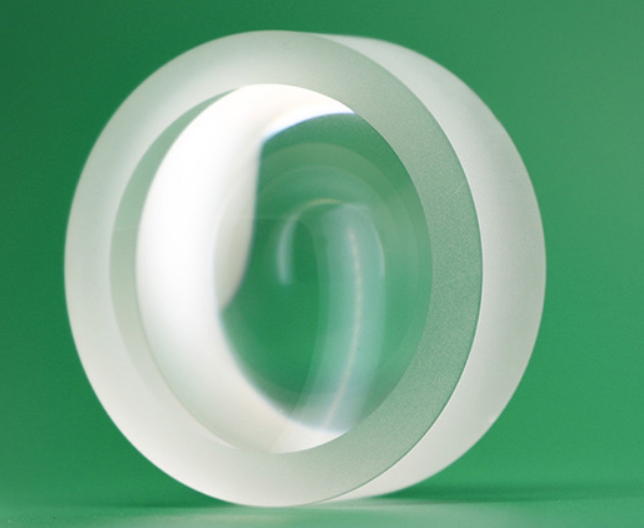What Is It About an Achromatic Lens That Makes the Image Clearer?
Aug. 28, 2023
Achromatic lenses are a fundamental component of optical systems, known for their ability to minimize chromatic aberration and enhance image clarity. To understand why achromatic lenses contribute to clearer images, it's essential to delve into the underlying principles of optics and the challenges they address.
An achromatic lens is a specialized type of optical lens designed to reduce chromatic aberration, an optical phenomenon that causes color fringing and blurring in images.
The concept of an achromatic lens revolves around combining multiple lens elements made from different materials to counteract the dispersion of light. The two main components used in an achromatic lens are typically a positive lens element made of a crown glass and a negative lens element made of flint glass. These elements are carefully designed and paired in a specific way to counterbalance the dispersion effects of each other, effectively reducing chromatic aberration.
Chromatic Aberration: The Culprit of Blurred Images
Chromatic aberration occurs due to the fact that different colors of light refract (bend) by varying amounts when passing through a lens. This phenomenon stems from the dispersion property of materials, where different wavelengths of light (colors) have different indices of refraction. When white light, which is composed of a spectrum of colors, passes through a lens, each color will focus at a slightly different point. This results in a phenomenon known as "color fringing," where the edges of objects in an image can appear surrounded by colored halos, causing a loss of image clarity.
There are two types of chromatic aberration:
1. Longitudinal Chromatic Aberration (LCA):
This occurs when different colors of light converge at different distances from the lens. This leads to a blurred image with different colors focusing at slightly different planes along the optical axis.
2. Lateral Chromatic Aberration (LCA):
Also known as transverse chromatic aberration, this occurs when different colors of light are spread out in different directions from the optical axis, causing color fringing around the edges of objects in an image.
The key principles that make an achromatic lens improve image clarity are:
1. Dispersion Compensation:
Dispersion refers to the property of a material to bend different colors of light by varying amounts. This phenomenon is responsible for chromatic aberration. An achromatic lens works by combining two different types of glass elements – crown and flint – with different dispersion characteristics. The crown element has a lower dispersion rate for shorter wavelengths (blue and violet), while the flint element has a higher dispersion rate. When these two elements are combined in a specific configuration, their dispersive effects counteract each other, resulting in less color fringing and clearer images.
2. Color Correction:
By choosing the appropriate curvature and thickness for each lens element, the achromatic lens designer can ensure that the chromatic aberration produced by one element is compensated for by the other. This careful balancing act effectively brings different wavelengths of light to a common focal point, improving the convergence of colors onto the same plane. This, in turn, results in a clearer and more focused image without the distracting color fringes.
3. Minimized Spherical Aberration:
Achromatic lenses are also designed to minimize spherical aberration, an effect that causes off-axis light rays to focus at different points than on-axis rays. By carefully shaping the lens elements, this aberration is reduced, leading to a more uniform focusing of light across the entire image.
4. Reduced Coma:
Coma is another aberration that causes off-axis points of light to appear as comet-like shapes instead of sharp points. Achromatic lenses are designed to mitigate this effect as well, ensuring that off-axis objects remain relatively clear and focused.
5. Improved Image Quality:
The combined effects of dispersion compensation, color correction, minimized spherical aberration, and reduced coma lead to significantly improved image quality. Achromatic lenses produce images with better contrast, sharper details, and more accurate color rendition, making them invaluable tools in fields such as photography, microscopy, telescopes, and various optical instruments.
Conclusion
In summary, the superiority of achromatic lenses in improving image clarity stems from their ability to effectively counteract chromatic aberration through the careful combination of lens elements with different dispersion properties. By compensating for the tendency of lenses to disperse different colors of light by varying amounts, achromatic lenses create images that are clearer, sharper, and exhibit reduced color fringing. The intricate engineering and design principles behind achromatic lenses showcase the remarkable ways in which science and technology come together to enhance our ability to capture and perceive the visual world with greater accuracy and detail.
If you want to know more information about Achromatic Lens, please contact us. We will provide professional answers.
Explore [The Insider's Views](https://www.clzoptics.com/products/).





















